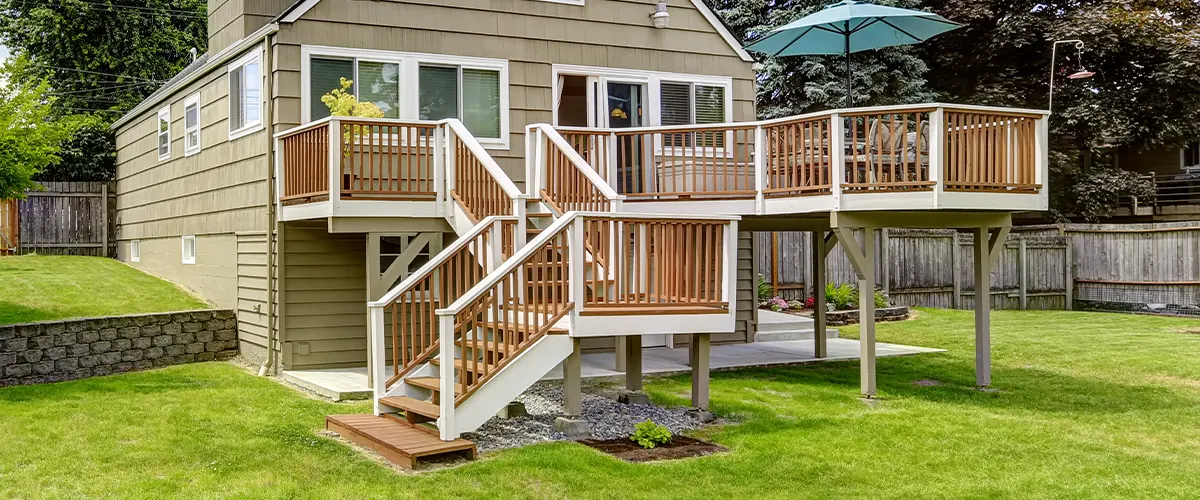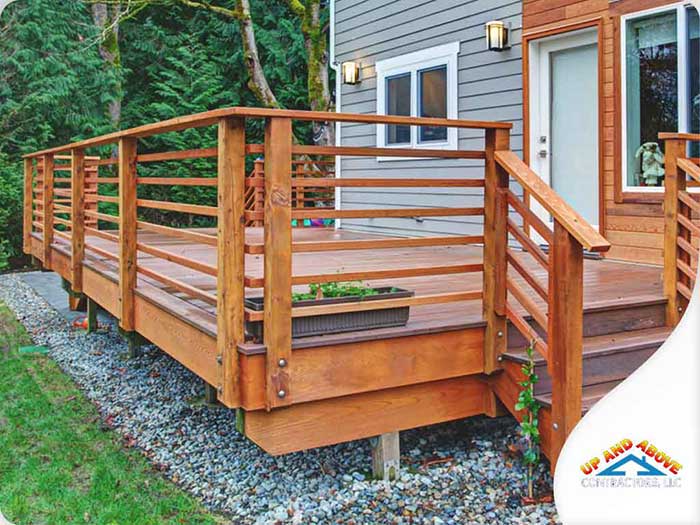Selecting the Right Deck Footings for Stability and Longevity
When it comes to constructing a deck, among the most crucial choices you will certainly make is picking the ideal footings for security and sturdiness. The longevity and safety of your deck depend heavily on the kind of footings you pick, as they supply the crucial support and security to stand up to the test of time. With a myriad of alternatives offered, it can be overwhelming to determine which grounds are best suited for your details requirements. In this conversation, we will certainly discover the different kinds of deck grounds, take into consideration the vital aspects to consider when making a decision, and look into the benefits and drawbacks of various choices. By the end, you will certainly have a clearer understanding of the selections available and be better outfitted to make an informed choice for your deck project.
Sorts Of Deck Footings
There are numerous kinds of deck footings that can be made use of, each offering special benefits and factors to consider. One common sort of footing is the concrete pier ground. These footings include a cylindrical hole filled up with concrete, which gives a solid foundation for the deck articles. Concrete pier grounds are reasonably very easy to mount and provide superb security, making them a popular choice for many deck projects.
Another sort of ground is the helical heap ground. Helical piles are steel shafts with helical plates connected to them. These footings are installed by screwing them right into the ground, which develops a secure foundation for the deck. Helical stack footings are perfect for areas with challenging dirt conditions, as they can be mounted in almost any kind of sort of soil. If required., they likewise enable for simple adjustment and progressing of the deck.
Additionally, some home builders opt for precast concrete grounds. These grounds are constructed from long lasting concrete and be available in numerous sizes and shapes to fit different deck layouts. Precast concrete footings are convenient to set up and offer a steady base for the deck structure.
Ultimately, one more alternative is the post-in-anchor footing system. This sort of ground includes driving a steel anchor right into the ground and attaching it to the deck blog post. It provides versatility in terms of positioning the deck blog posts and is appropriate for decks with light-weight structures.
When selecting the right sort of deck ground, it is necessary to take into consideration aspects such as dirt conditions, deck tons, and local building ordinance (Deck Footings). Consulting with a specialist specialist or architectural engineer can assist make certain the suitable footing is selected for a secure and stable deck
Factors to Consider When Selecting Grounds
When selecting the suitable grounds for a deck, it is crucial to meticulously consider different aspects such as dirt problems, deck load, and adherence to regional building ordinance. These aspects play a significant function in ensuring the stability and durability of the deck structure.
One of the main aspects to take into consideration is the soil conditions. The sort of soil on which the deck will be developed figures out the sort of grounds called for. Decks built on sandy or loose dirts might require much deeper grounds to give ample assistance and stop settling. On the various other hand, decks built on clay or expansive soils might require grounds that can suit the soil's propensity to increase and contract.
One more essential factor is the deck lots. The weight of the deck, consisting of the materials used and any type of prospective live lots such as furnishings or gatherings, must be thought about when picking grounds. The footings have to be created to bear the weight of the deck and disperse it uniformly to prevent any kind of architectural issues or failings.
Last but not least, adherence to neighborhood building regulations is paramount. Building ordinance vary from area to area, and it is essential to adhere to the particular needs set by the local authorities. Deck Footings. These codes guarantee that the deck is built securely and meets the essential requirements for architectural honesty and load-bearing capability
Concrete Grounds: Benefits And Drawbacks

When utilized as the structure for a deck,Concrete footings use a number of advantages and drawbacks. On the silver lining, concrete grounds provide outstanding security and toughness. Concrete is a solid and rigid material that can sustain heavy tons and hold up against numerous weather conditions. It likewise has a long lifespan, making it a trusted choice for lasting usage.
One more advantage of concrete footings is their convenience. They can be put right into various forms and dimensions to Learn More suit numerous deck styles and arrangements. Concrete grounds can be personalized to fit the specific requirements and needs of the deck structure.
Nonetheless, there are likewise some drawbacks to making use of concrete grounds. This can boost the overall price of the deck job and may call for expert support.

Helical Piers Vs. Sonotubes: Which Is Much better?
In considering the structure options for a deck, the comparison between helical piers and sonotubes is vital in establishing the superior choice. Helical piers, likewise referred to as screw stacks, are steel shafts with helical plates connected to them. They are turned right into the ground utilizing hydraulic machinery, supplying a secure and sturdy structure for the deck. On the other hand, sonotubes are cylindrical forms made of cardboard or fiber product that are loaded with concrete. They are put in a hole dug into the ground and provide assistance for the deck.
The helical plates on the piers produce a strong hold with the soil, shifting or protecting against any type of activity of the deck. Sonotubes, on the other hand, count entirely on the concrete filling for security, which may not supply the same degree of strength and resistance.
In regards to installation, helical piers are reasonably much easier and faster to install compared to sonotubes. The hydraulic equipment used to twist the piers right into the ground guarantees a reliable and fast process. Sonotubes, on the various other hand, require excavating openings and pouring concrete, which can be labor-intensive and taxing.
Additionally, helical piers are an even more versatile alternative. If required, they can be used in various dirt conditions and can be adjusted or strengthened. Sonotubes, on the various other hand, may require extra support, such as rebar, in specific soil conditions or areas with high tons needs.
Picking the Right Footings for Your Deck's Dimensions
For ideal structural stability, it is vital to very carefully pick the appropriate footings that line up with the measurements of your deck. The measurements of your deck, including its size, size, and elevation, play a substantial duty in determining the type and size of footings required.
When choosing footings for your deck, it is necessary to think about the load-bearing capacity of the soil. The weight of the deck, combined with the weight of any furniture or individuals on it, applies a substantial force on the grounds (Deck Footings). It is crucial to pick grounds that can effectively support this weight without changing or sinking over time.
The size and shape of the grounds must likewise be considered. Larger decks with better measurements need larger grounds to offer sufficient stability and support. The form of the grounds, whether they are square or rounded, use this link relies on the style and layout of the deck. Furthermore, the depth at which the grounds are set up ought to be determined based upon the frost line in your region to avoid any heaving or changing due to freezing temperatures.
Conclusion
In verdict, choosing the best deck grounds is essential for making sure security and resilience. Elements such as the kind of grounds, the deck's measurements, and the pros and disadvantages of different options ought to be thought about.
These grounds are composed of a round opening filled with concrete, which offers a solid foundation for the deck articles. Concrete pier grounds are reasonably very easy to set up and provide excellent security, making them a prominent option for several deck tasks.
Precast concrete grounds are convenient to install and provide a stable base for the deck structure.
It offers flexibility in terms of positioning the deck messages and is suitable for decks with lightweight structures.
Concrete grounds supply numerous benefits and negative aspects when made use of as the structure for a deck.